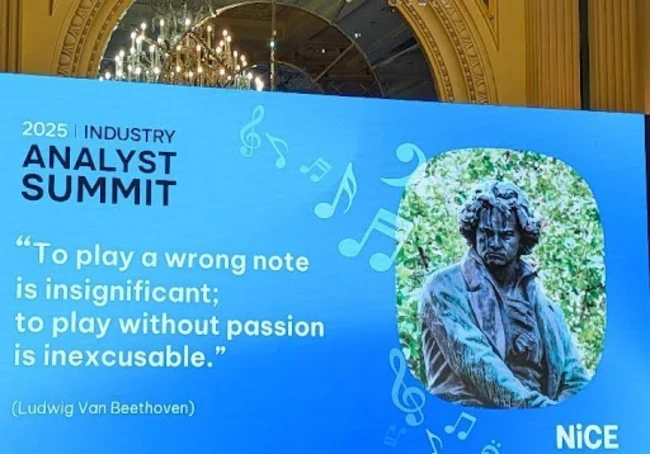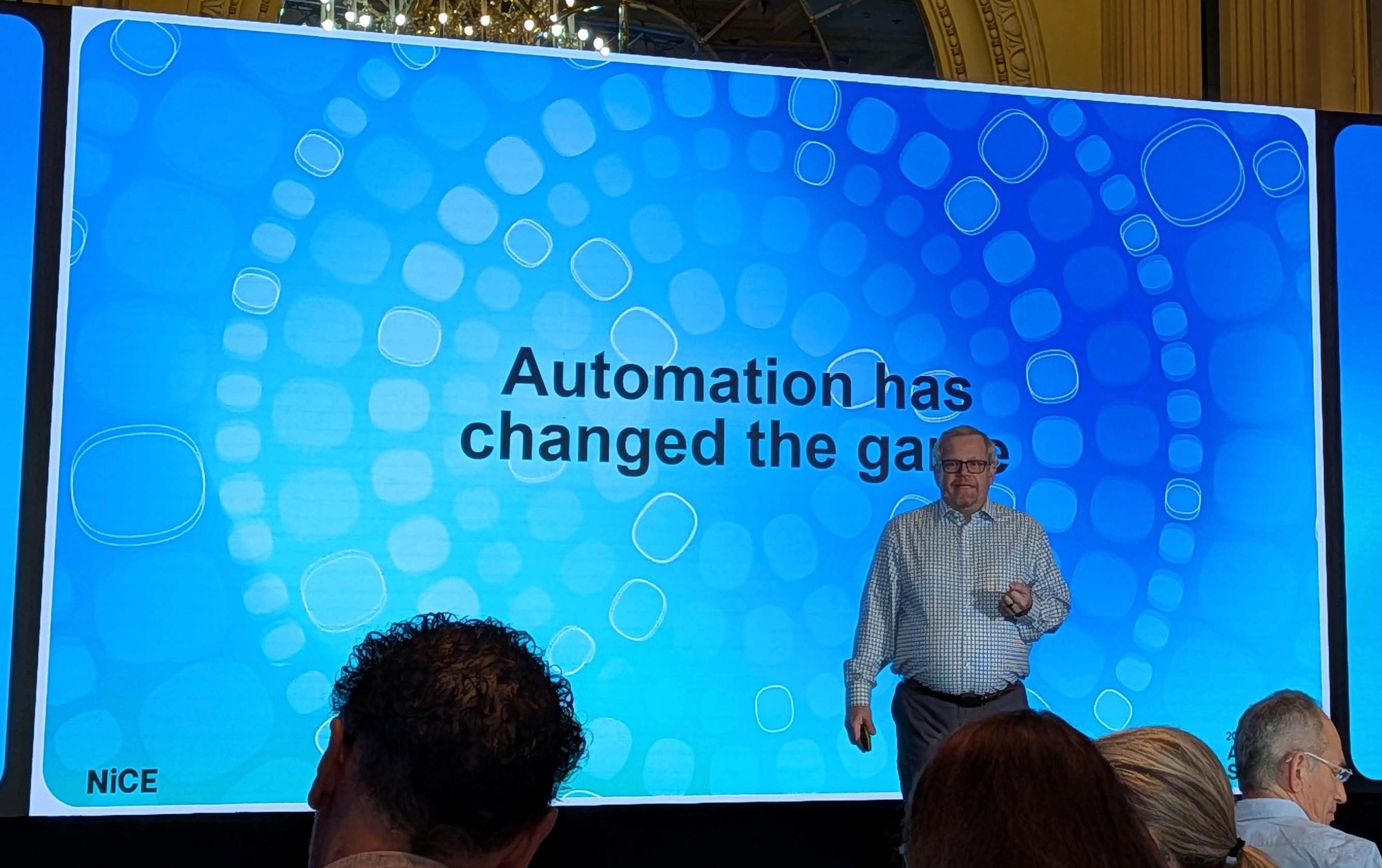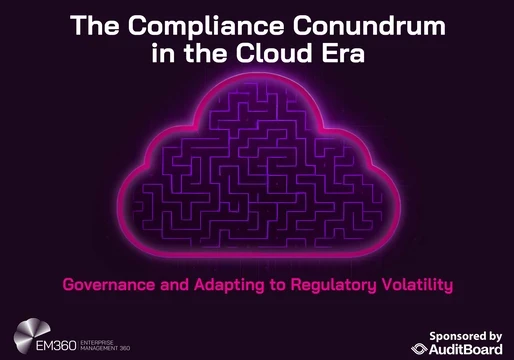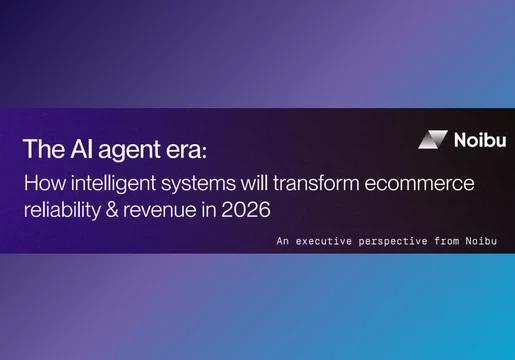For the past few years, NiCE has been setting the pace for industry analyst events, and this year did not disappoint. The technology analyst community in the contact center space is quite small, but NiCE understands how important we are to the broader marketplace, and in support of that, they brought the largest cohort of analysts ever to this event. The setting was Vienna, and being surrounded by so much history and culture, the messaging seemed to carry added weight.
Momentum remains strong for NiCE, not just for continued growth and leadership recognition, but having a new cadre of senior management, and of course, the recent acquisition of Cognigy. There was a lot to like from what we heard, and I’ve tried to distill that into three key themes. Balancing that, I’ll share some areas where I think work needs to be done to maintain their leadership position in a crowded and fast-moving market.


Theme 1 – Speed is a Choice
This was the opening message from CEO Scott Russell, and while it sounds simplistic, it reflects a fundamental choice for staying ahead of the competition. While nobody can afford to go slow, the commitment to speed is a recognition of how AI is transforming this market. I say “this market” intentionally, because its definition is shifting faster than ever before.
For many years, customer service was about the telephony-centric call center, but that gave way to the contact center once multimodal channels became the norm. With the rise of cloud-based platforms, CCaaS has taken things to another level, and even more so once customer experience became the raison d’etre for contact centers.
AI will surely bring more change, and in time, terms like contact center and CCaaS will go the way of call center. While we don’t know what will come next, it will come fast, and falling behind the curve will carry existential risk.
As such, speed becomes a business strategy, where keeping pace – or setting the pace – with AI is the best approach to maintaining market leadership – whatever it evolves into. For the time being, “this market” is about CX, and the stated vision from Scott is “to become the leading CX AI player that automates end-to-end enterprise orchestration on a single CEP platform”. This is a much broader vision than with conventional CCaaS, and it can only be realized with AI, hence the need to pair AI with CX for the vision.
NiCE is already well-along this path, with Scott noting a 42% YoY growth in their AI revenues, and over one million users on their AI-driven CXone platform. This success will only be accelerated by the Cognigy acquisition, and in the context of a supporting a speed-based strategy, it’s easy to understand why this move was made.
The notion of speed being a choice isn’t just a matter of moving fast – it’s more about the need to do whatever it takes to keep pace with AI, which by its nature moves quickly. NiCE clearly views AI as the leading determinant of success, so they have little choice but to embrace speed to maintain their position as the CX market leader.
Theme 2 – Having the Best Data Wins
Given how AI works best at scale, it would be reasonable to assume that having the most data is the key to success for improving CX. After all, the contact center is arguably the most data-rich environment in a business, and for that reason, it’s not surprising this has long been one of the best use cases for AI.
Data is foundational for any form of success with AI, but it’s not enough just to have the most data. There’s more nuance to consider here, and David Gustafson did a great job explaining this. In previous analyst events, NiCE has talked about having the industry’s largest dataset to train its AI models, along with having had an early start with AI, and having a massive customer base.
This time around, the data story was parsed out in more granular detail, with five attributes that define why NiCE is having success with AI for CX.
Extensiveness. This attribute does speak to having the most data, which is undeniably important. To home this in on making CX better, extensiveness is further defined by reach across the entire organization. In earlier times, this dataset would primarily be in the realm of the contact center, but with NiCE’s vision now spanning the entire organization, a holistic view means having data across the front, middle and back office. For AI to have a transformational impact on CX, data must be drawn from all these links in the chain.
Quality. David referred to this as having the “highest fidelity” data. Clinical as this may sound, data quality can vary widely, especially historical data, which was largely accumulated at a time when data was not viewed as a strategic asset the way it is now with AI. Given how AI-centric NiCE has become, this is a foundational element of their go-to-market, with the focus being on helping customers develop the highest-quality datasets possible.
Dynamic. Data does not exist in a vacuum, and with AI, the value of data can only be realized via applications that support specific use cases. Not only that, but data must be “dynamically applied”, which speaks to another intrinsic quality of AI – real-time performance. Great CX outcomes are largely dependent on the ability of agents to respond in the moment, and with high quality data inputs across the organization, they can perform at levels not possible with legacy technology. In terms of this CX focus, key AI use cases for all this data would include intelligent routing, workflow automation, knowledge base access, and agent assist support.
Open and extensible. This speaks to the need for a CX platform to seamlessly interwork with other platforms that host customer data. To a large extent, these platforms remain siloed, operating as islands to address a narrowly defined set of needs. NiCE’s holistic approach to CX requires the opposite environment, hence the need to be open and extensible. Software platforms such as SAP and Dynamics provide essential business value on their own, but that data drives another level of value when tied to CX, and this capability is a core pillar of the CXone platform.
Actionable and observable. This is the behavioral element of CXone, where the focus is on outcomes rather than processes. Both are important, but these particular outcomes reflect a key piece of the AI story that is easy to overlook. Efficiency and automation will always be value drivers for AI, but we’re talking about customer service, where the most important interactions are between human agents and human customers. The message is that data must be actionable to have value – passive KPI metrics that contact centers have used for so long do little to improve CX. AI identifies data that can acted upon with a high probability of driving better customer outcomes. Equally important, data must observable – otherwise there will be no way to know who is using the data, and in what manner. In short, this is the “human in the loop” element that helps position AI as a tool to augment agent performance rather than replace them.

Theme 3 – Shift to Customer-Focused Workflows
Important as human in the loop is for making AI attractive to contact centers, automation remains a central value driver. Tim Harris led a session on workflow orchestration, and while automation is really table stakes for AI, his position was that most organizations are getting it wrong. He noted that workflows tend to be about shifting elements of work from one person to another across the organization.
He characterized this with a motif often heard through the sessions – and one we haven’t heard before – how workflows are handed off manually among front, middle and back offices. We’ve heard front and back before, but not middle, and this is another example of the horizontal approach NiCE is taking to grow beyond the contact center with CX.
The main point here is that front, middle and back office each have different systems and platforms, so integrating across all of them needs to be done, and not every vendor can do that. However, when bringing automation into the picture here, organizations are thinking in terms of the handoff of workflows – it’s very process-oriented.
This is fine for driving internal efficiencies with AI, but for NiCE, workflow orchestration needs to be about customer-focused workflows. The driving objective here is not just better CX for the customer, but a unified CX that can only come from automated workflows across the organization in the service of the customer – not in the service of organization for operational efficiency.
These differences are subtle and may not be apparent to businesses still deeply rooted in legacy technologies. However, being CX-first, this approach to orchestrating workflows is very apparent to NiCE, and is a prime example of how Scott Russell frames their approach to AI with their customers – it’s all about “guiding the journey, not selling the product”.
What Could Go Wrong, and Final Thoughts
There is no question that NiCE has a strong vision for CX, and the company has been executing with solid success for some time. Their financial performance remains best-in-class, and the growth metrics are impressive - over 27,000 customers, and tracking to hit $3 billion in revenues being just two examples.
Over the course of the summit, we got rich updates; not just about what’s new and how the portfolio is evolving, but also hearing from customers and partners There is so much more I could have covered in this writeup, but I felt it especially important to focus on workflow orchestration and articulating how NiCE thinks about data. These may not be the first things that come to mind for why NiCE is a market leader, but in my view, they are more about what really matters when deploying AI to improve CX.
So, what could go wrong?
I’ve said enough already about the Cognigy acquisition, but that move does align well with speed being a choice. Beyond what NiCE is already doing with R&D to remain leading edge, Cognigy adds a distinct track on top of that to keep innovation moving at the speed of AI. Aside from that, the move takes Cognigy off the table for competitors. Am not sure if any other conversational AI vendors are on Cognigy’s level, so whatever moves other CCaaS players make to counter this, they won’t be able to innovate at the speed of NiCE, which really is the point here.
That said, there is potential risk of the acquisition not working out. Am not seeing signs of that yet, and Cognigy definitely brings complementary capabilities to CXone. However, it may be unrealisitic for Cognigy to continue with its own branding and supporting partners like Five9 and Genesys. Some practical choices will need to be made, and given AI’s trajectory, it is in both company’s interests to make this better-together union work.
Another topic I didn’t see covered enough was their channel strategy. The company has not been that channel-friendly in the past, but it was good to see Tier 1 partners Accenture and Deloitte share how they are working with large enterprises to help CX leaders become AI-centric and enable these new capabilities. That said, most other partners will be smaller with fewer capabilities, and we didn’t hear how NiCE is going to get them up to speed and bring their CX AI vision to life.
Speaking of that vision, wearing my marketing hat, I do have some concerns about the optics of this CX AI vision. Yes, AI is needed for CX to get to this level, but the AI moniker does carry some baggage. There are valid fears about AI replacing agents, and leaving customers too reliant on AI agents to solve their problems, along with providing the personal touch that reflects well on the brand.
If this is what businesses come to associate AI with, then the NiCE brand will suffer as a result. Many will continue seeing AI in a positive light, but for those who see it hurting the business even if it improves CX, that pall will fall over NiCE. Not to mention the very real possibility of AI settling as being just good enough, and despite the hype, not getting to the next level for CX excellence – or worse, for things like deepfakes, giving bad advice, being rude, insensitive, etc.
Of course, if we get to that point with AI, this will be an industry-wide problem, as most all CCaaS vendors have adopted an AI-first posture. Thinking just about the NiCE brand, however, the company put a lot of stock in Kristen Bell as a brand ambassador, and that has gone quite well until it didn’t, given her recent missteps on social media that have hurt her personal brand. Celebrity endorsements always carry risk, and this serves as a cautionary tale for going all-in on the AI megatrend, which itself could be one or two missteps away from losing its luster.
To close things out, it’s also fair to note the risk that the new leadership team could bring if their own missteps undo much of what the long-tenured team before them worked so deftly to build up. On the other hand, it’s also true that the board may have felt it was a bigger risk sticking with that team to get NiCE to the next level. However, from what we saw at the summit, the new team – namely Scott Russell, Jeff Comstock and Michelle Cooper – seems to be on the right track, and my view is that NiCE is in very good hands.







Comments ( 0 )